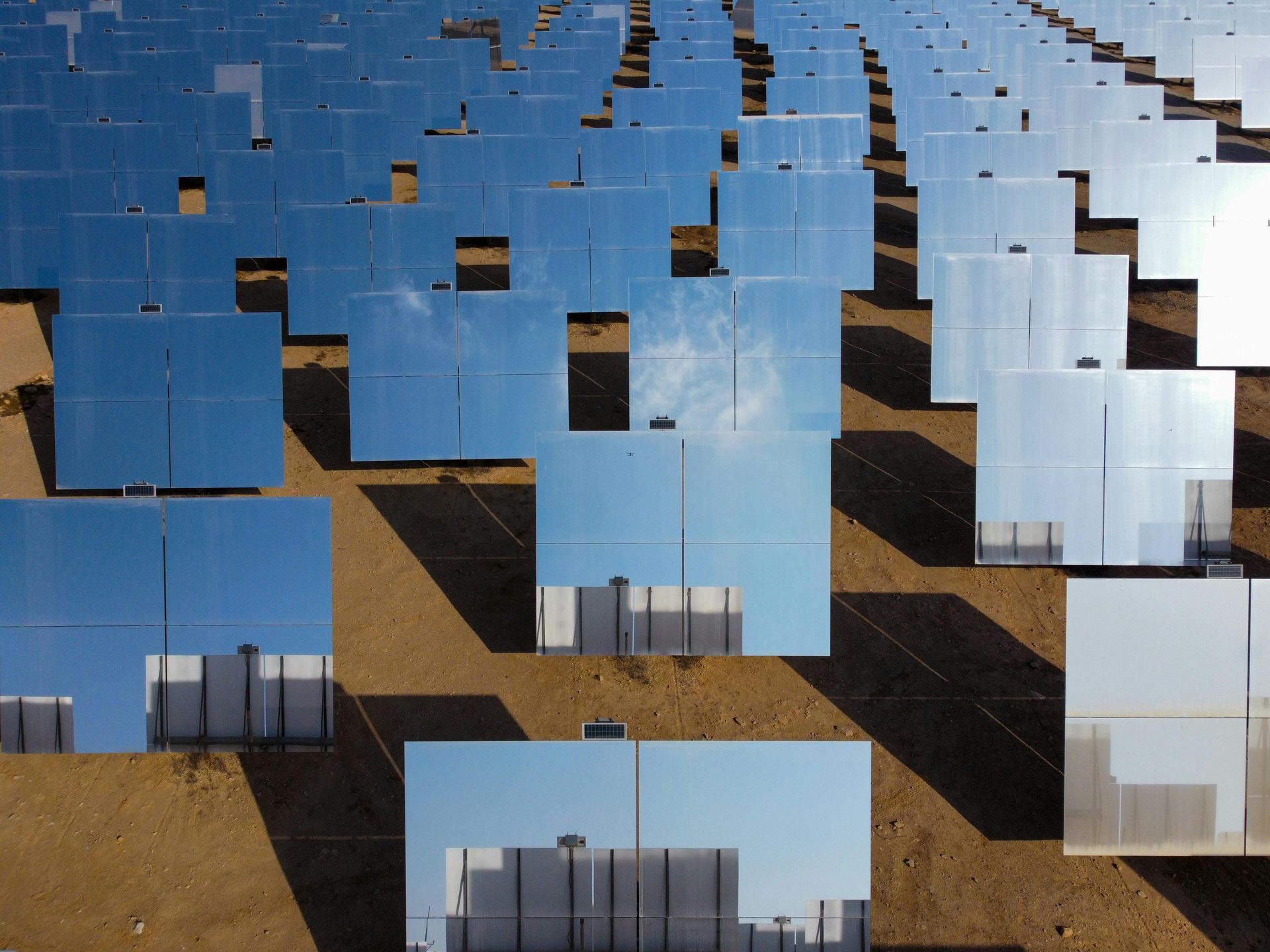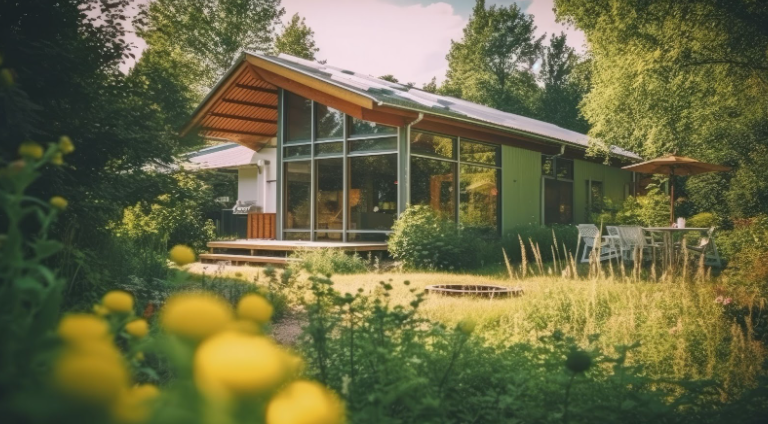Love us? Share us!
Danijela Quenzler • January 3, 2022
New Year. New Goals!
Our goal is to help make home buying and selling a little less stressful. If you loved working with us, we’d love the opportunity to help your family and friends transition into a new home or out of an old one.
There’s nothing more flattering than a referral.
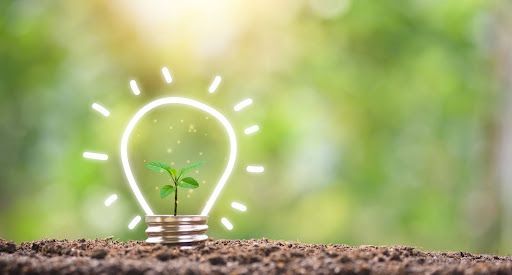
Arizona's building codes serve as a cornerstone for the state's real estate market, establishing a framework that emphasizes safety, sustainability, and energy efficiency in residential properties. Situated in a region characterized by extreme temperatures and varied landscapes, these codes ensure that homes are not only secure but also environmentally conscious and cost-effective to maintain. Over time, Arizona's building codes have undergone significant evolution, with recent updates placing a strong emphasis on enhancing energy efficiency. Local authorities are pivotal in crafting and enforcing these standards, ensuring that both new constructions and renovations align with the state's sustainable development goals. The Importance of Energy Efficiency Standards in Arizona Energy efficiency standards hold a central role in Arizona's building codes, particularly given the state's hot climate. These standards aim to minimize energy consumption and lessen the environmental impact of residential buildings. They specify requirements for insulation, windows, and HVAC systems, among other features. By integrating these standards, Arizona homes can markedly reduce their carbon footprint and foster sustainability. Common energy-efficient features recommended by the codes include high-performance windows, advanced insulation techniques, and energy-efficient heating and cooling systems. Benefits of Energy-Efficient Homes Adhering to energy efficiency standards yields numerous advantages. These standards improve home safety by ensuring optimal indoor air quality and thermal comfort. They also contribute to sustainability efforts by reducing carbon emissions and conserving natural resources. Homeowners benefit from cost savings over time through reduced energy consumption and lower utility bills. Energy-efficient homes often boast higher property values and are more attractive in the real estate market. A study by the National Association of Realtors highlights that homes with energy-efficient features tend to sell faster and at higher prices than those lacking such features. Addressing Common Misconceptions Despite the clear benefits, misconceptions about building codes and energy efficiency standards persist. Some individuals perceive these standards as overly stringent or unnecessary, while others believe they significantly increase construction costs. Factual information dispels these myths. According to a building code official, energy efficiency standards are crafted to be cost-effective and beneficial in the long term. While the initial investment in energy-efficient technologies may be higher, the long-term savings on energy bills often offset these costs. The Role of Builders and Developers Builders and developers are integral to the implementation of energy efficiency standards. They ensure that new constructions comply with the codes and integrate energy-efficient designs and technologies. Developers frequently employ strategies such as using sustainable materials and designing homes to maximize natural light and ventilation. Challenges like high upfront costs and the need for specialized knowledge can impede compliance. Collaboration between developers, architects, and local authorities is essential to overcome these challenges and ensure successful implementation. Future Trends in Energy Efficiency Standards Future trends in energy efficiency standards in Arizona are expected to focus on technological advancements and innovation. The integration of smart home technologies and renewable energy sources is anticipated to shape future standards, making homes even more energy-efficient. Industry experts predict that as technology evolves, building codes will continue to adapt, incorporating new materials and construction techniques. Community Initiatives and Cultural Shifts Local news stories have underscored the growing importance of energy efficiency standards in Arizona. Community initiatives and events promoting energy-efficient living are becoming more prevalent, reflecting a cultural shift toward sustainability. In cities like Phoenix and Scottsdale, energy efficiency is becoming an integral part of the community's identity, influencing local policies and development practices. Cultural attitudes toward sustainability are playing a significant role in the adoption and implementation of these standards, as more residents prioritize environmentally friendly living. The Environmental and Economic Impact The broader environmental and economic impact of energy efficiency standards in Arizona is substantial. These standards contribute to significant reductions in greenhouse gas emissions, aiding in climate change mitigation. Economically, they stimulate job creation in the green building sector and provide long-term savings for homeowners. Government incentives and programs further support energy-efficient building practices, making them more accessible to a wider audience. In the long term, energy efficiency standards offer economic benefits for both homeowners and the community at large, fostering a more sustainable and prosperous future. Challenges in Implementing Energy Efficiency Standards Implementing energy efficiency standards in Arizona is not without its challenges. One major obstacle is the high upfront cost associated with adopting energy-efficient technologies. While these investments pay off over time, the initial financial burden can be a deterrent for some builders and homeowners. Another challenge is the need for specialized knowledge and skills to properly implement these standards. This requires ongoing education and training for builders, developers, and inspectors to stay current with the latest technologies and methods. Lastly, there can be resistance from stakeholders who are accustomed to traditional building practices and may be hesitant to adopt new standards. Overcoming these challenges requires concerted efforts from all parties involved, including government agencies, industry professionals, and the community. The Role of Technology in Advancing Energy Efficiency Technology plays a pivotal role in advancing energy efficiency in Arizona's building sector. Innovations such as smart home systems , energy-efficient appliances, and renewable energy solutions are transforming how homes are built and operated. Smart thermostats, for example, allow homeowners to optimize their energy use by adjusting temperatures based on occupancy and preferences. Solar panels and energy storage systems are becoming more common, providing clean energy solutions that reduce reliance on the grid. As technology continues to evolve, it will drive further advancements in energy efficiency standards, making homes more sustainable and cost-effective. Community Involvement and Education Community involvement and education are critical components in the successful implementation of energy efficiency standards. Public awareness campaigns and educational programs can help residents understand the benefits of energy-efficient homes and encourage adoption. Community workshops and seminars provide opportunities for residents to learn about new technologies and practices, fostering a culture of sustainability. By engaging the community and providing the necessary resources and information, Arizona can enhance the effectiveness of its energy efficiency standards and promote a more sustainable future. Economic Implications of Energy Efficiency Standards The economic implications of energy efficiency standards in Arizona are far-reaching. By reducing energy consumption, these standards help lower utility costs for homeowners, providing significant financial savings over time. Energy-efficient homes also tend to have higher resale values, making them a wise investment for homeowners. On a broader scale, the adoption of energy efficiency standards stimulates job growth in the green building sector, creating opportunities for skilled workers and professionals. Government incentives and tax credits further encourage the adoption of energy-efficient practices, making them more accessible to a wider range of homeowners and developers. Arizona's commitment to energy efficiency in its building codes is reshaping the real estate landscape, fostering a more sustainable and environmentally conscious future. These standards not only enhance the safety and comfort of homes but also offer significant economic and environmental benefits. As technology continues to advance and community awareness grows, Arizona is well-positioned to lead the way in sustainable development. By understanding and embracing these standards, homeowners, builders, and investors can contribute to a greener and more prosperous future for the state. For further inquiries, contact Daniela Quenzler, Realtor today for expert guidance on navigating Arizona's real estate market and understanding the intricacies of building codes and energy efficiency standards.
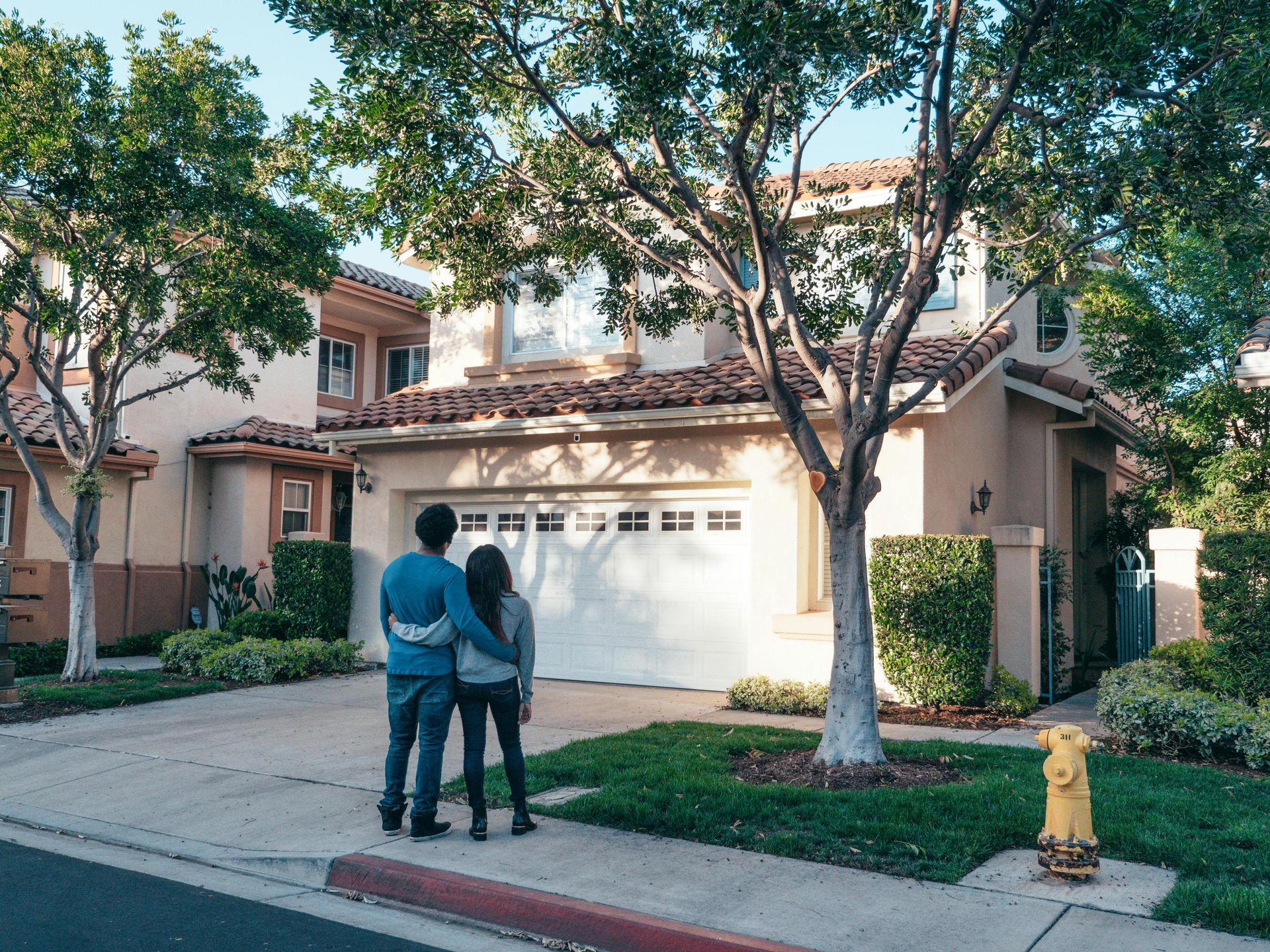
Arizona's real estate landscape is witnessing a significant shift as energy-efficient homes become increasingly popular. Areas like Phoenix, Scottsdale, and Cave Creek are at the forefront of this trend, with more homeowners and developers prioritizing sustainable living. This shift reflects a growing awareness of the environmental impact of traditional housing and the economic benefits of eco-friendly living. State incentives and programs, such as tax credits for solar panel installations, have further fueled this transition, making green homes more accessible and attractive to buyers. The rising demand for energy-efficient homes is not just about environmental responsibility. It also reflects a broader trend in the real estate market where sustainable living is becoming a crucial factor for buyers. The integration of green technologies and designs in homes is not just a trend but a long-term shift towards more sustainable living standards. Economic Perspectives on Renting vs. Buying The decision to rent or buy an energy-efficient home in Arizona involves various economic considerations. While renting offers lower upfront costs, buying a home can provide long-term financial benefits, especially in the context of energy efficiency. Current market trends in Arizona's green real estate sector indicate that property values for energy-efficient homes are steadily increasing. This trend suggests that investing in such properties could yield significant returns over time. Rental prices for energy-efficient homes are often comparable to mortgage rates, making homeownership a viable option for those considering long-term financial stability. Environmental Impact: Renting and Buying When comparing the environmental impact of renting versus owning an energy-efficient home, ownership typically offers more control over energy usage and sustainability practices. Homeowners can implement personalized eco-friendly solutions, such as solar panels and smart home technologies, which can significantly reduce their carbon footprint. In Arizona, several eco-friendly developments serve as examples of sustainable living . These communities prioritize green building practices, creating environments that promote a healthier lifestyle. Lifestyle Flexibility and Personal Preferences Renting provides greater flexibility, accommodating those who may need to relocate frequently or prefer not to commit to long-term homeownership. This flexibility can be particularly appealing for individuals with dynamic careers or those who anticipate lifestyle changes. On the other hand, owning a home offers stability and the opportunity to personalize living spaces according to one's tastes and needs. Factors such as family size, career prospects, and future plans play a significant role in deciding whether to rent or buy. In Arizona, local cultural and geographical factors, such as proximity to natural attractions and community amenities, can also influence this decision. Expert Opinions on Current Market Conditions Local real estate experts offer valuable insights into the pros and cons of renting versus buying in Arizona's current market. According to these experts, the green real estate sector is poised for growth, driven by increasing consumer demand for sustainable living options. They predict that as more people recognize the economic and environmental benefits of energy-efficient homes, the market will continue to expand. Experts also highlight the importance of considering both economic and environmental trends when making housing decisions. By staying informed about these trends, potential buyers and renters can make more informed choices that align with their financial and environmental goals. Long-Term Cost Benefits of Energy-Efficient Homes Investing in an energy-efficient home can lead to substantial savings on utility bills over time. These homes are designed to minimize energy consumption, resulting in lower monthly expenses for homeowners. Additionally, the maintenance costs for energy-efficient homes are often lower compared to traditional homes, as they are built with durable, high-quality materials. The resale value of energy-efficient homes in Arizona is another factor to consider. As demand for sustainable living increases, these properties are likely to appreciate in value, making them a sound investment for the future. Evaluating the Decision-Making Process When deciding whether to rent or buy, it's important to evaluate personal financial situations and lifestyle goals. Utilizing tools and resources for calculating costs and benefits can aid in this process. Consulting with real estate professionals and financial advisors can provide additional guidance and clarity. Community and Cultural Influences Arizona's vibrant communities and cultural attractions play a significant role in housing decisions. The state's unique blend of urban and natural environments offers diverse living experiences. Eco-friendly neighborhoods in Phoenix, Scottsdale, and Cave Creek provide a sense of community and access to amenities that enhance quality of life. The decision to rent or buy an energy-efficient home in Arizona involves careful consideration of economic, environmental, and lifestyle factors. By understanding these elements, individuals can make informed choices that align with their values and long-term goals.

Networking plays a crucial role for individuals passionate about sustainable living. For eco-friendly homeowners, connecting with like-minded individuals is not just about sharing tips and resources; it’s about building a community with a shared purpose. This sense of community is particularly significant in Arizona, where environmentally conscious living is on the rise. In cities like Phoenix, Scottsdale, and Cave Creek, more people are seeking sustainable solutions, making networking an essential part of their eco-friendly journey. Network Groups Local green home network groups in Arizona offer a platform for individuals to connect and collaborate on sustainable living practices. In cities like Phoenix, Scottsdale, and Cave Creek, various groups focus on promoting green living. These groups provide benefits such as sharing resources, learning about sustainable practices, and participating in community projects. For instance, the Phoenix Green Living Group meets monthly to discuss topics like solar energy and water conservation. Another active group in Scottsdale focuses on sustainable gardening and hosts workshops regularly. These groups have initiated notable projects, such as community gardens and local clean-up drives, fostering a culture of sustainability. Social Media Social media has become a powerful tool for eco-friendly homeowners to connect and share ideas. Platforms like Facebook, Instagram, and LinkedIn host vibrant communities dedicated to sustainable living. These online spaces offer support, advice, and inspiration, helping individuals make informed choices about eco-friendly practices. On Facebook, groups like "Sustainable Living Arizona" provide a forum for discussions and resource sharing. Instagram accounts focused on zero-waste living offer visual inspiration and practical tips. LinkedIn groups connect professionals interested in sustainability, facilitating knowledge exchange and networking. Events Sustainability-focused events in Arizona offer opportunities for individuals to engage with experts and fellow eco-friendly homeowners. In Phoenix, Scottsdale, and Cave Creek, events promoting energy conservation and eco-friendly practices are regularly organized. These include workshops, seminars, and community clean-up days. Attending these events provides networking opportunities and access to expert advice on sustainable living. Local Businesses Local businesses and organizations in Arizona play a pivotal role in supporting eco-friendly homeowners. Through partnerships and sponsorships, they provide resources and initiatives that promote sustainable living. Real estate companies, such as Danijela Quenzler Realty, emphasize energy-efficient homes and sustainable practices. Collaborations between businesses and community groups further enhance networking opportunities for homeowners. For instance, local hardware stores might sponsor workshops on eco-friendly home improvements, bringing together experts and residents to share knowledge and resources. Location Arizona's unique geography and climate significantly influence sustainable living practices and networking opportunities. The state’s arid climate necessitates water conservation efforts, which are often a focus of local sustainability initiatives. Culturally, there is a growing awareness and commitment to environmental conservation, with many residents actively participating in eco-friendly practices. Local traditions, such as rainwater harvesting and native plant landscaping, align with sustainable living goals. These cultural and geographical factors shape the networking landscape, encouraging eco-conscious homeowners to connect and collaborate. Future Looking to the future, networking opportunities for environmentally conscious homeowners are likely to evolve. Technological advancements could facilitate connections through virtual reality meetups or AI-driven community platforms. Emerging environmental challenges, such as climate change, might also influence networking trends, prompting more collaborative efforts to address these issues. Younger generations, with their strong commitment to sustainability, will play a significant role in shaping the future of eco-friendly networking, bringing fresh perspectives and innovative ideas. Networking is a powerful tool for promoting sustainable living among eco-friendly homeowners in Arizona. These connections provide valuable resources, support, and inspiration, enabling individuals to make meaningful contributions to environmental conservation. By participating in local groups, online communities, and sustainability-focused events, homeowners can enhance their sustainable living journey and drive positive environmental change. Continued engagement and collaboration within these networks are essential for fostering a culture of sustainability and ensuring a greener future for Arizona and beyond.
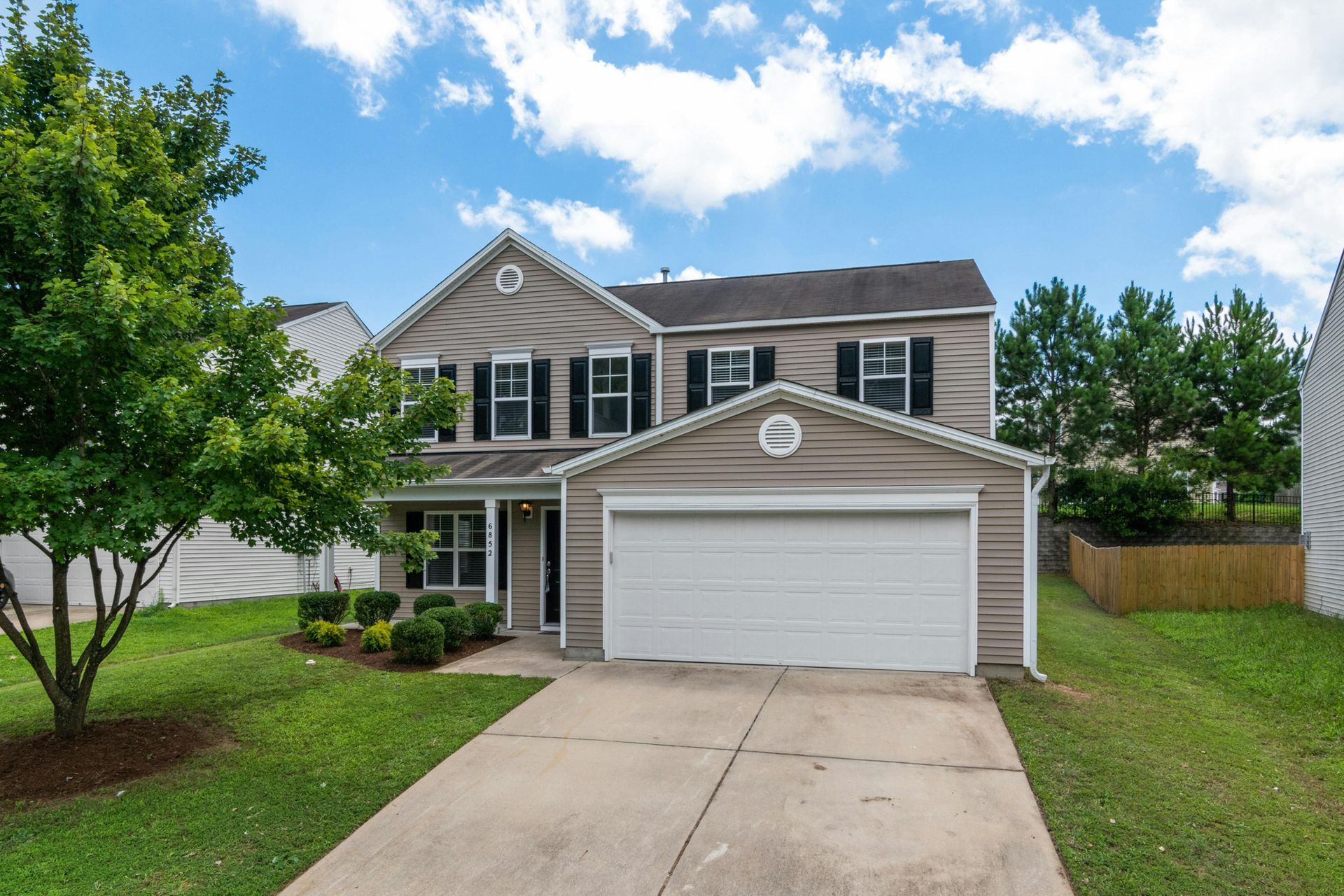
Homeowner associations (HOAs) play a pivotal role in managing residential communities. Traditionally, they have been responsible for maintaining common areas and enforcing community rules. However, there's a growing trend towards incorporating eco-friendly initiatives within HOAs, reflecting a broader societal shift towards sustainability. This trend is especially significant in urban areas like Phoenix, where sustainable living is becoming increasingly important due to environmental challenges. The rise of eco-friendly HOAs is a response to the growing awareness of environmental issues and the desire to live in harmony with nature. These associations are adopting sustainable practices to reduce their carbon footprint, conserve resources, and promote a healthier lifestyle for residents. In Phoenix, where the urban heat island effect and water scarcity are pressing concerns, eco-friendly HOAs are making a positive impact. Sustainable Initiatives Promoted by HOAs Eco-friendly HOAs in Phoenix are implementing a range of sustainable initiatives. Common practices include recycling programs and guidelines for energy efficiency. These measures not only reduce waste and energy consumption but also foster a culture of environmental responsibility among residents. Landscaping and water conservation efforts are also prominent. HOAs are encouraging the use of native plants and xeriscaping, which require less water and are better suited to the desert climate. This approach helps preserve the region's limited water resources and maintains the natural beauty of the landscape. Solar energy integration is another key initiative. HOAs are increasingly offering incentives for homeowners to install solar panels, which provide clean and renewable energy. This not only reduces reliance on fossil fuels but also leads to significant cost savings for residents. Community gardens and local food sourcing are also gaining popularity. These projects encourage residents to grow their own food, reducing the need for transportation and promoting healthier eating habits. Such initiatives enhance community engagement and foster a sense of shared purpose. Benefits of Eco-Friendly HOAs for Residents Residents of eco-friendly HOAs enjoy numerous benefits. Energy efficiency and resource conservation lead to cost savings on utility bills, making sustainable living financially attractive. Additionally, these initiatives promote community engagement and collaboration, as residents work together towards common goals. Health benefits are another significant advantage. Reduced pollution and increased green spaces contribute to a healthier living environment. Studies have shown that green spaces can have positive effects on mental and physical health. Challenges and Considerations Despite the benefits, implementing eco-friendly practices in HOAs comes with challenges. Financial constraints and logistical hurdles can impede progress. Balancing sustainability with community preferences requires careful planning and communication. Resistance or apathy from residents can also be an obstacle. To overcome this, HOAs need to invest in education and awareness campaigns, highlighting the long-term benefits of sustainable practices. By fostering a culture of environmental responsibility, HOAs can encourage residents to embrace eco-friendly initiatives. Future Trends and Opportunities for Eco-Friendly HOAs The future holds exciting possibilities for eco-friendly HOAs. Emerging technologies and practices in sustainable living, such as smart home systems and advanced water conservation techniques, are likely to be adopted. Additionally, potential policy changes and incentives from local governments can further support these initiatives. HOAs have the potential to drive broader community and city-wide sustainability efforts. By partnering with local governments and organizations, they can amplify their impact and contribute to Phoenix's environmental goals. Local Cultural and Geographical Influences Phoenix's unique environmental challenges, such as water scarcity and extreme heat, necessitate innovative approaches to sustainability. The desert landscape influences the choice of plants and landscaping practices, with native flora like succulents and cacti being popular choices. Cultural attitudes towards sustainability in the Southwest also play a role. There's a growing appreciation for eco-friendly practices, driven by a desire to preserve the natural beauty of the region. By incorporating local flora and fauna into landscaping, HOAs can create harmonious and sustainable environments. The Importance of Community Eco-friendly HOAs demonstrate the power of community-driven initiatives in promoting sustainable living. By working together, residents can create a positive impact on their environment and improve their quality of life. The future of eco-friendly HOAs in Phoenix looks promising, with the potential to inspire broader sustainability efforts and contribute to the city's environmental goals.
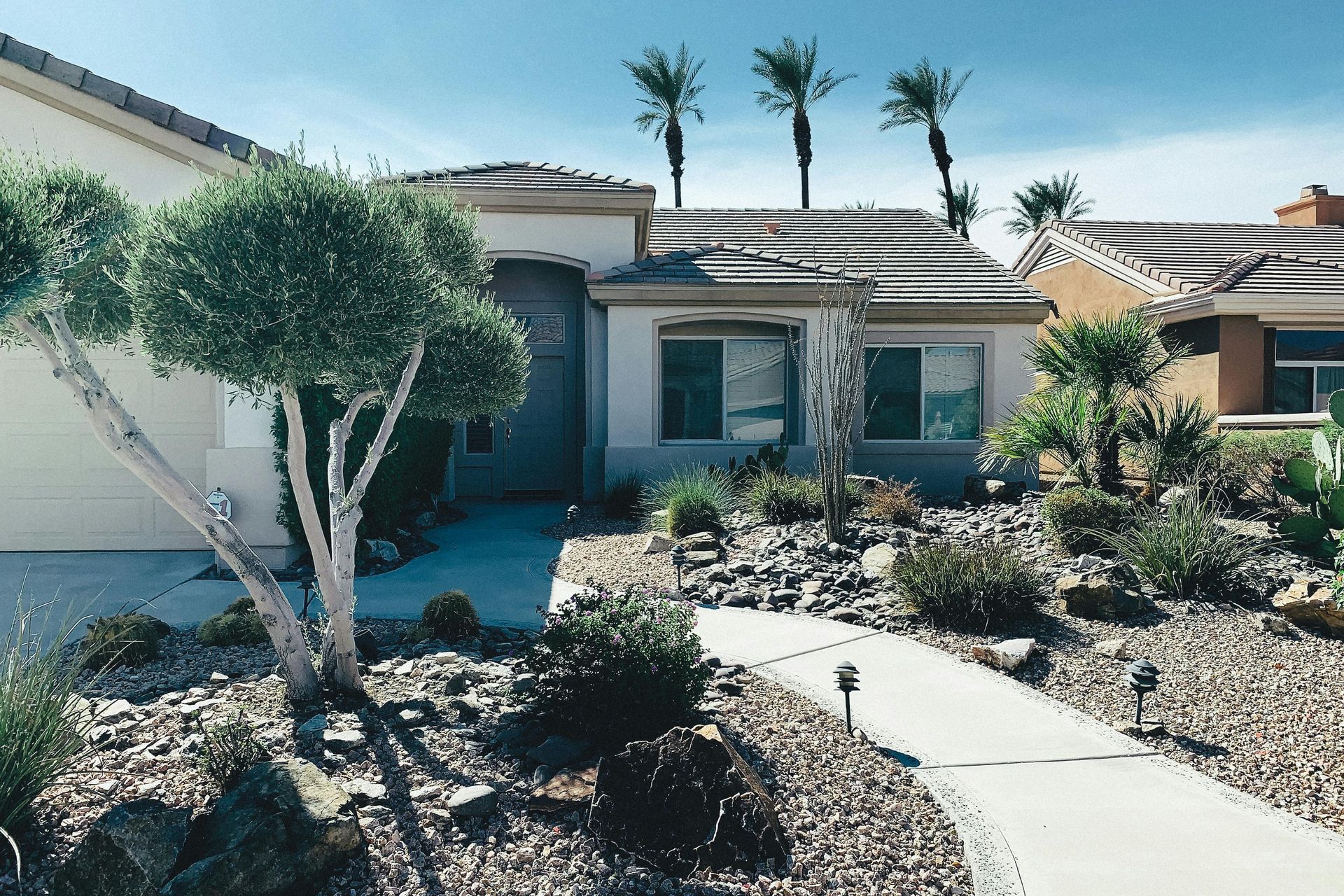
Understanding the unique climate of Arizona is crucial for anyone looking to create a sustainable landscape. The state is known for its desert climate, characterized by extreme temperature ranges and low precipitation levels. Summers can be scorching, with temperatures often exceeding 100 degrees Fahrenheit, while winters are mild and pleasant. Rainfall is sparse, which presents both challenges and opportunities for landscaping. The arid environment demands water-efficient solutions, but it also offers the opportunity to design landscapes that thrive in dry conditions. Arizona's geography greatly influences plant selection and landscape design. The diverse terrain, ranging from lowland deserts to high plateaus, requires an understanding of local microclimates. This knowledge helps in choosing plants that are not only drought-tolerant but also suited to specific areas. For instance, the Sonoran Desert's unique flora, such as saguaro cacti and palo verde trees, can serve as inspiration for sustainable landscaping. The Importance of Drought-Tolerant Landscaping Drought-tolerant landscaping is essential in Arizona due to its arid climate. This approach focuses on using plants that require minimal water, thereby conserving a precious resource. The environmental benefits are significant, as it reduces water consumption and helps maintain the local ecosystem. Economically, it leads to lower water bills and reduced maintenance costs, making it a cost-effective choice for homeowners. Drought-tolerant landscaping is a cornerstone of sustainable living. It aligns with eco-friendly practices by minimizing resource use and promoting biodiversity. By incorporating native plants and efficient irrigation systems, homeowners can create beautiful landscapes that contribute to environmental conservation. Introduction to Xeriscaping Xeriscaping is a landscaping method that is particularly relevant for Arizona homes. It emphasizes water conservation through careful planning and plant selection. The seven principles of xeriscaping include planning and design, soil improvement, efficient irrigation, appropriate plant selection, mulching, and maintaining the landscape. Successful xeriscaping projects can be found in cities like Phoenix, Scottsdale, and Cave Creek. These projects showcase how xeriscaping can create visually appealing landscapes that are both functional and sustainable. By following the principles of xeriscaping, homeowners can achieve a balance between aesthetics and environmental responsibility. Selecting Drought-Tolerant Plants Choosing the right plants is crucial for a successful drought-tolerant landscape. Popular options for Arizona's climate include agave, yucca, and desert marigold. These plants are well-suited to the local environment and require minimal water. Native plants offer additional benefits due to their adaptability to local conditions. They are resilient to the harsh climate and often provide habitat for local wildlife. When selecting plants, consider both aesthetic preferences and environmental needs. Opt for a variety of textures and colors to create an appealing landscape that thrives with minimal water. Water-Saving Techniques for Landscaping Implementing water-saving techniques is vital for maintaining a sustainable landscape in Arizona. Drip irrigation is a popular method that delivers water directly to the plant's roots, minimizing evaporation. Rainwater harvesting is another effective technique, capturing rainwater for later use. Using mulch and soil amendments can help retain moisture and improve plant health. These materials reduce evaporation and keep the soil cool, promoting healthy plant growth. Efficient watering schedules and practices, such as watering early in the morning or late in the evening, can further conserve water. Innovative technologies, like smart irrigation systems, offer advanced solutions for water conservation. Enhancing Curb Appeal with Eco-Friendly Designs Creating an attractive landscape that adheres to eco-friendly principles is achievable with thoughtful design. Incorporating hardscaping elements, such as stone pathways and gravel beds, can complement plantings and reduce water use. These elements add structure and visual interest to the landscape. Outdoor living spaces can be designed to blend with the natural environment, offering a seamless transition between indoor and outdoor areas. Examples from local homeowners demonstrate how sustainable practices can enhance curb appeal while respecting the environment. Community and Cultural Considerations Landscaping in Arizona is not just about aesthetics; it also involves cultural and community considerations. Certain plants and styles hold cultural significance in local communities, reflecting the region's rich heritage. Community guidelines and local ordinances can impact landscape design choices, emphasizing the importance of sustainable practices. Community resources, such as workshops and local gardening clubs, support sustainable landscaping efforts. These organizations offer education and assistance to homeowners looking to create eco-friendly landscapes. Community involvement is crucial for promoting sustainable practices and preserving Arizona's natural beauty. Sustainable landscaping plays a significant role in enhancing the quality of life for Arizona residents. By adopting eco-friendly practices, homeowners can contribute to environmental conservation while enjoying beautiful, functional landscapes.
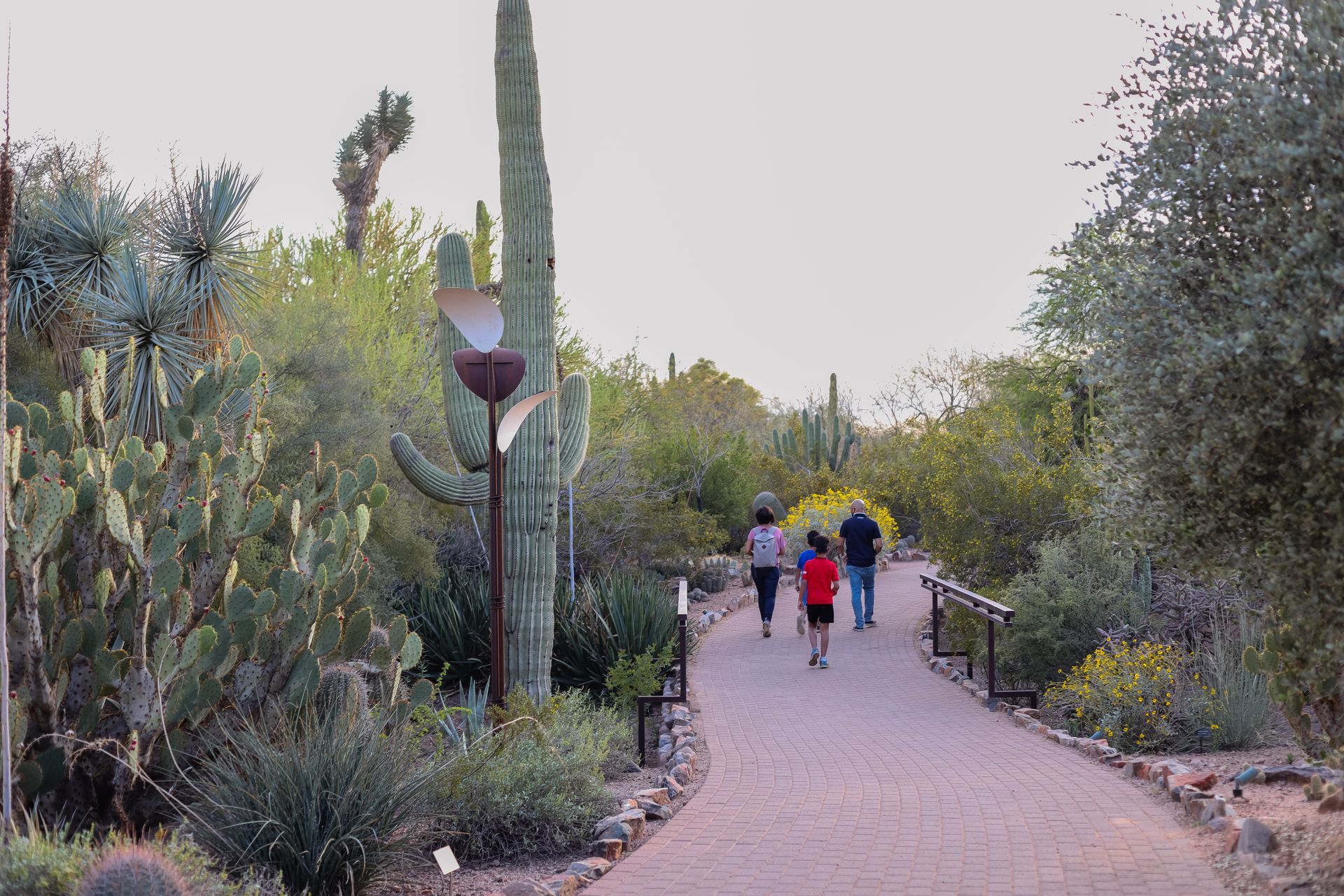
Exploring green parks and engaging in eco-friendly activities can be a fulfilling way for families to bond and learn about sustainability. In Phoenix and Scottsdale, there are numerous opportunities to immerse oneself in nature and sustainability-focused events. This article will explore some of the best eco-friendly parks, museums with sustainability exhibits, community programs, and tips for engaging in eco-friendly activities. Exploring Green Parks in Phoenix and Scottsdale Urban parks in Phoenix and Scottsdale offer eco-friendly spaces where families can enjoy nature while learning about sustainability. Papago Park in Phoenix is renowned for its natural beauty and sustainable practices. The park is home to the Desert Botanical Garden, which showcases a wide variety of desert plants and emphasizes the importance of conserving native flora. Visitors can hike the numerous trails, offering a chance to connect with nature and understand the desert ecosystem's intricacies. In Scottsdale, the McDowell Sonoran Preserve stands as a testament to conservation efforts. Spanning over 30,000 acres, this preserve is dedicated to maintaining the natural desert habitat and providing educational opportunities about the environment. Families can explore the vast network of trails, witnessing the unique desert landscape while learning about local conservation efforts. More information about the McDowell Sonoran Preserve can be found on the City of Scottsdale’s official page . Spending time in nature offers numerous benefits for family bonding and environmental education. Engaging with natural spaces helps instill a sense of responsibility toward the environment in children, fostering a deeper connection with the world around them. Museums With Sustainability Exhibits Museums play a crucial role in promoting sustainability by offering educational exhibits and programs. The Arizona Science Center in Phoenix is a prime example, featuring eco-conscious exhibits that explore topics such as renewable energy and sustainable living. Families can learn about the science behind sustainability through interactive displays and activities. For current exhibit details, visit the Arizona Science Center’s website . The Heard Museum in Phoenix also contributes to sustainability education by showcasing the sustainable practices of Native American cultures. Through its exhibits, visitors can gain insight into traditional ecological knowledge and how these practices continue to influence modern sustainability efforts. These museums provide valuable educational opportunities for families to understand sustainability's significance and how it can be integrated into daily life. Community Programs and Workshops Community initiatives in Phoenix and Scottsdale are pivotal in supporting eco-friendly living. Local workshops on sustainable gardening and recycling offer practical knowledge and skills that families can apply at home. These programs emphasize the importance of environmental responsibility and encourage community involvement. Family-friendly events such as tree planting days and eco-fairs are popular in the area, providing hands-on experiences that promote sustainability. These events are excellent opportunities for families to work together toward a common environmental goal. Local libraries also play a role by offering sustainability-themed activities for children. These programs often include storytimes, crafts, and educational sessions that highlight the importance of taking care of the planet. Tips for Engaging in Eco-Friendly Activities Incorporating sustainability into daily life can be both fun and educational for families. Here are some practical tips to help you get started: Make Eco-Friendly Activities Fun: Engage children in activities like nature scavenger hunts or building birdhouses from recycled materials. These activities can be both entertaining and educational, teaching children about the environment in a hands-on way. Reduce Carbon Footprint: Encourage the use of public transportation or biking instead of driving. This not only reduces your carbon footprint but also provides a chance to explore your community from a different perspective. Participate in Local Clean-Up Events: Joining community clean-up events can be a rewarding family bonding experience. Working together to clean up parks or local neighborhoods instills a sense of pride and responsibility. Create a Sustainable Home Environment: Incorporate energy-efficient appliances and practices into your home. Simple changes like using LED bulbs or starting a compost bin can significantly impact your household's sustainability. By engaging in these activities, families can contribute to a greener lifestyle while fostering a deeper connection with each other and the environment. In conclusion, Phoenix and Scottsdale offer a wealth of opportunities for families to engage in eco-friendly activities. From exploring green parks and visiting museums with sustainability exhibits to participating in community programs, there are countless ways to embrace sustainability in these vibrant communities. By incorporating these activities into daily life, families can enjoy meaningful experiences while contributing to a healthier planet. Are you ready to make Phoenix the next home for your family while prioritizing sustainability? Contact Danijela Quenzler today to embark on your eco-conscious real estate journey.
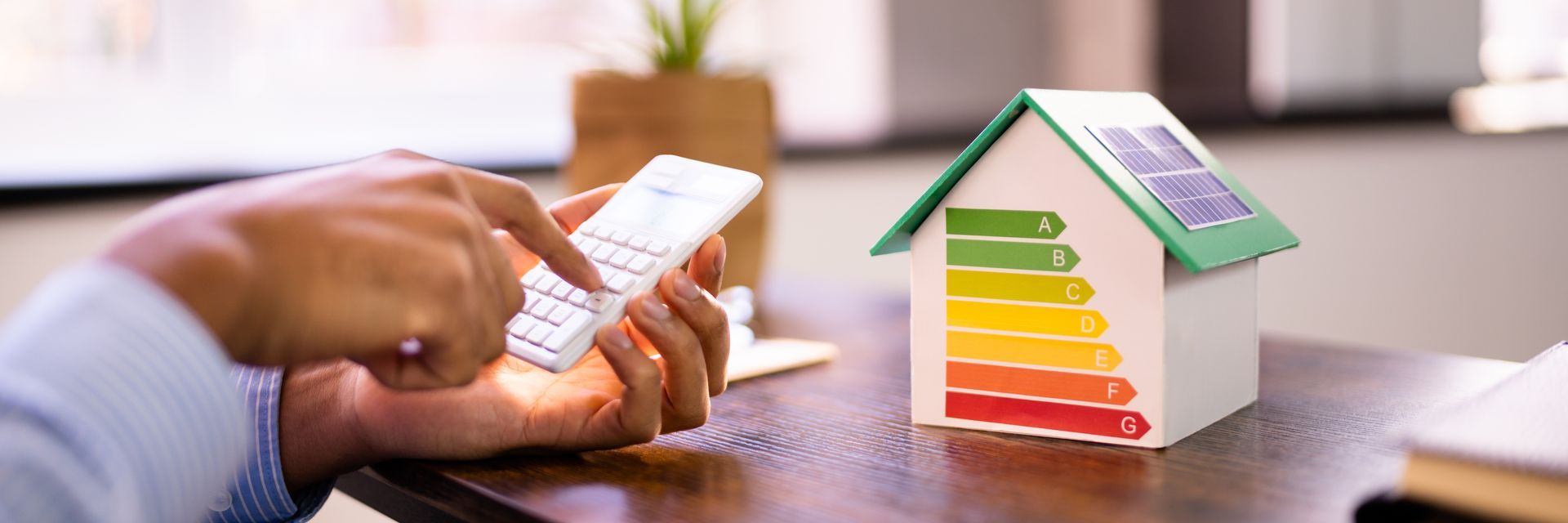
Understanding the energy efficiency of a home is crucial, especially in regions like Arizona, where the climate demands substantial energy consumption. Energy audits provide a comprehensive assessment of a home’s energy use, identifying areas where improvements can be made to enhance efficiency and reduce costs. Understanding Energy Audits An energy audit is a thorough evaluation of a home’s energy consumption patterns. Its primary purpose is to assess the energy efficiency of a property and pinpoint areas where energy usage can be reduced. During a typical energy audit, various components of the home are inspected, including insulation, heating and cooling systems, windows, and appliances. Energy auditors utilize advanced tools and technologies, such as infrared cameras and blower door tests, to detect air leaks and evaluate insulation effectiveness. Benefits of Conducting an Energy Audit Conducting an energy audit offers several benefits. Financially, it helps homeowners save on utility bills by identifying inefficiencies that, once corrected, can lead to significant cost reductions. Environmentally, energy audits contribute to a reduced carbon footprint and promote energy conservation. In Arizona, where energy efficiency is highly valued, an energy audit can also enhance the marketability of a home. Many buyers might enjoy energy-efficient homes. The Energy Audit Process in Detail The energy audit process typically begins with an initial consultation, where the auditor discusses the homeowner’s concerns and goals. This is followed by a comprehensive inspection of the property, during which the auditor collects data on energy usage. After the inspection, the auditor provides a detailed report outlining recommended improvements, prioritized based on cost-effectiveness and impact. The duration and cost of an energy audit can vary depending on the size and complexity of the property, but generally, it is a worthwhile investment for long-term savings. Potential Savings in Arizona’s Climate Arizona’s hot desert climate presents specific challenges and opportunities for energy savings. Common inefficiencies found in homes in Phoenix, Scottsdale, and Cave Creek include poor insulation and outdated HVAC systems. Addressing these issues can lead to significant energy savings. For instance, upgrading to a high-efficiency air conditioning system or adding insulation can dramatically reduce energy consumption. Interview With an Energy Auditor Professional energy auditors offer valuable insights into the importance and impact of energy audits. Many homeowners hold misconceptions about energy audits, believing they are costly or unnecessary. However, auditors emphasize that these evaluations are crucial for identifying hidden inefficiencies that can lead to substantial savings. Auditors also note that the audit process can vary significantly depending on the type and age of the home, as well as the specific energy challenges it faces. Testimonials From Homeowners Homeowners who have undergone energy audits often share positive experiences. For example, one Phoenix resident noted that after implementing the auditor’s recommendations, they saw a reduction in their monthly energy bills. Another homeowner in Scottsdale highlighted increased comfort levels after sealing air leaks and upgrading their HVAC system. While some challenges may arise during the implementation of improvements, such as initial costs, these are often outweighed by the long-term benefits. Implementing Recommended Improvements Implementing the changes suggested by an energy audit involves careful planning and execution. Homeowners may face challenges such as budget constraints or finding reliable contractors. However, local contractors and service providers play a crucial role in assisting with these upgrades. In Arizona, several resources and programs support homeowners in making energy-efficient improvements, ensuring that the process is as smooth and cost-effective as possible. The Long-Term Impact of Energy Audits The long-term benefits of maintaining energy efficiency in homes are significant. Not only do energy-efficient homes tend to have higher property values, but they also contribute to sustainability efforts. Regular energy audits help homeowners stay updated with the latest energy-saving technologies and practices, ensuring their homes remain efficient over time. Moreover, energy-efficient homes align with broader community goals of sustainability and environmental responsibility, making them increasingly attractive in environmentally conscious communities. Local Resources and Support Phoenix, Scottsdale, and Cave Creek offer a range of local resources to support energy audits and efficiency improvements. Government incentives and rebates are available for homeowners who invest in energy-efficient upgrades. Community initiatives and programs also promote energy efficiency and sustainability, providing valuable support for homeowners. Local organizations and events focused on energy conservation further enhance these efforts, fostering a culture of sustainability within the community. Final Thoughts on the Value of Energy Audits Energy audits play a vital role in improving home energy efficiency, offering numerous financial and environmental benefits. For homeowners in Arizona, they are a proactive step towards reducing energy consumption and enhancing property value. As energy efficiency becomes increasingly important in real estate, particularly in areas like Arizona, energy audits are poised to become a standard practice in the industry. Danijela Quenzler, your trusted real estate advisor, can guide you through maximizing your home's value with energy-efficient upgrades. Contact us today to learn more.
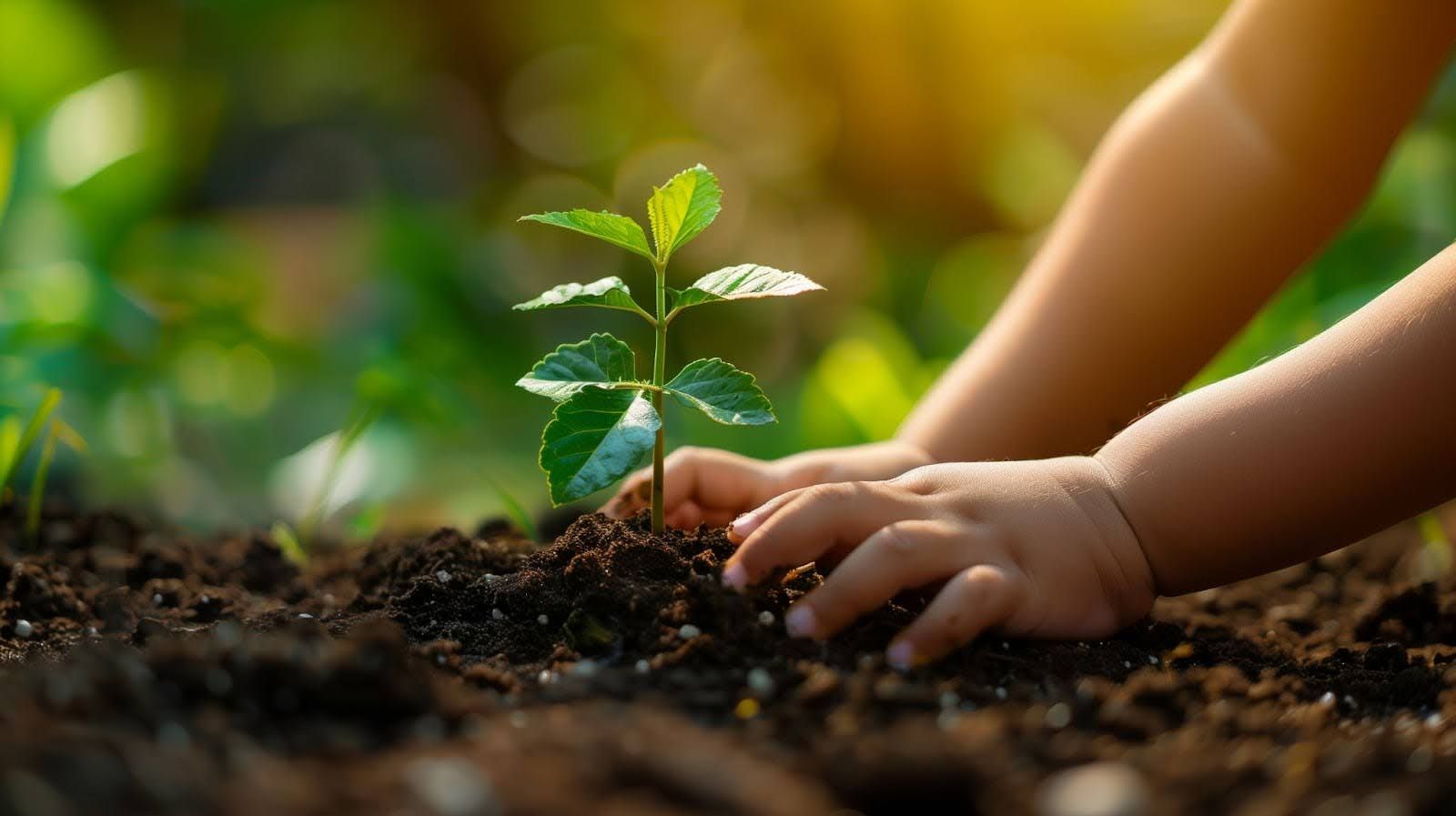
Nestled in the Sonoran Desert, Cave Creek, Arizona, is a charming town that captivates eco-conscious individuals and nature lovers. With its proximity to Phoenix and Scottsdale, Cave Creek provides a harmonious mix of accessibility and a close-knit community vibe. The town's dedication to sustainable living, coupled with its breathtaking natural surroundings, makes it an ideal destination for those who prioritize an environmentally friendly lifestyle. Exploring Local Farmers' Markets Farmers' markets are pivotal in promoting sustainable living and bolstering local agriculture. In Cave Creek, these markets are a vibrant hub where residents and visitors can purchase fresh, locally sourced produce and artisanal goods. The Cave Creek Farmers Market is a cornerstone of the community, offering a wide array of products ranging from organic fruits and vegetables to handmade crafts. Shopping at farmers' markets not only boosts the local economy but also curtails the carbon footprint linked with transporting goods over long distances. Both vendors and visitors value the community spirit and the chance to connect with local producers. Research indicates that farmers' markets contribute to local economies, preserve farmland, and encourage healthy communities. Nature Trails and Outdoor Activities Cave Creek boasts a variety of nature trails that offer eco-friendly recreational experiences. The Spur Cross Ranch Conservation Area is a favored spot for hiking, bird watching, and photography, featuring diverse flora and fauna. The Black Mountain Trail, known for its challenging ascent, rewards hikers with stunning views of the surrounding desert landscape. When planning a hike in Cave Creek, it's crucial to consider the local climate and terrain. Ensuring adequate hydration, wearing suitable footwear, and protecting oneself from the sun are essential steps for a safe and enjoyable adventure. For those seeking more information on hiking safety and preparation, the American Hiking Society provides comprehensive guidelines . Environmentally Friendly Events Cave Creek hosts numerous annual events centered on sustainability and environmental awareness. Earth Day celebrations and eco-fairs are popular gatherings that unite the community in learning about sustainable practices and appreciating the area's natural beauty. These events foster a sense of community while educating residents on the importance of environmental conservation. Organizers often stress the significance of these gatherings in promoting a sustainable lifestyle. One local organizer shares, "Our Earth Day event is a wonderful opportunity for the community to come together and share ideas on how to live more sustainably." Participants leave with a renewed commitment to protecting the environment and supporting eco-friendly initiatives. Community Perspectives Residents of Cave Creek frequently emphasize the town's strong sense of community and the shared dedication to sustainable living. Locals take pride in supporting one another and participating in eco-friendly initiatives that benefit the town as a whole. Community groups and organizations focused on environmental conservation play an active role in promoting sustainable practices and educating the public. One resident remarks, "Living in Cave Creek means being part of a community that truly cares about the environment. We support each other in our efforts to live sustainably, and it's inspiring to see the impact we can make together." Unique Local Amenities Cave Creek offers an array of unique amenities that cater to eco-conscious homeowners. Solar-powered businesses and green building initiatives are increasingly prevalent, reflecting the town's commitment to sustainability. Local businesses adopting sustainable practices contribute to Cave Creek's reputation as an environmentally-friendly community. The local government also plays a significant role in supporting environmental sustainability through policies and initiatives aimed at reducing the town's carbon footprint. These efforts not only benefit the environment but also enhance the quality of life for residents. Eco-Conscious Real Estate Opportunities For those considering a move to Cave Creek, the real estate market offers eco-friendly options that align with sustainable living values. Many homes in the area incorporate energy-efficient features, such as solar panels, water-saving fixtures, and sustainable building materials. These properties appeal to buyers who prioritize reducing their environmental impact while enjoying the comforts of modern living. Real estate agents in Cave Creek often highlight the town's commitment to sustainability when showcasing properties. Prospective homeowners can find a range of options that suit their preferences and budget, all while supporting the town's eco-friendly ethos. The demand for environmentally-conscious homes continues to grow, making Cave Creek an attractive destination for those seeking a green lifestyle. The Role of Education in Sustainability Education plays a crucial role in fostering a culture of sustainability in Cave Creek. Local schools and educational programs emphasize environmental awareness and sustainable practices, instilling these values in students from a young age. By integrating sustainability into the curriculum, schools encourage students to become environmentally responsible citizens. Community workshops and seminars further support lifelong learning about sustainability. These events provide residents with the knowledge and tools needed to implement eco-friendly practices in their daily lives. By prioritizing education, Cave Creek ensures that future generations will continue to uphold the town's commitment to environmental stewardship. The Influence of Art and Culture Art and culture in Cave Creek reflect the town's connection to nature and sustainability. Local artists often draw inspiration from the surrounding desert landscape, creating works that celebrate the beauty of the natural world. Art galleries and cultural events in Cave Creek showcase these pieces, fostering an appreciation for the environment and promoting eco-friendly themes. Cultural events in the town also highlight sustainable practices, encouraging attendees to consider their environmental impact. By integrating art and culture with sustainability, Cave Creek enriches the community experience and reinforces the importance of environmental consciousness. Cave Creek, Arizona, exemplifies a town that embraces sustainable living and provides abundant opportunities for eco-conscious homeowners. From vibrant farmers' markets and scenic nature trails to environmentally friendly events and community initiatives, Cave Creek stands as a model of sustainable living. Whether you're a nature enthusiast or someone seeking a place that aligns with your values, Cave Creek offers a unique blend of accessibility, community spirit, and commitment to the environment. For inquiries or to learn more about eco-friendly real estate opportunities in Cave Creek, contact Daniela Quenzler Realtor today .

